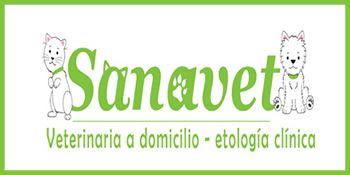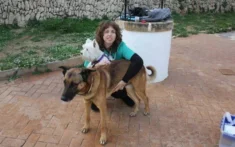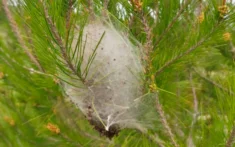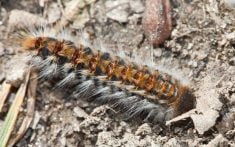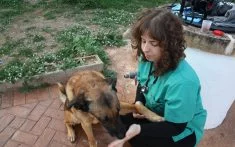The pine processionary o Thaumetopoea pityocampa It is a danger for our pets, since when the good weather arrives the phase in which the caterpillars descend from the nest to the ground in the form of a procession to bury themselves and continue with their biological cycle. We can see the nests in the form of white bags in the branches of the pines. If you have a pet, Sanavet explains this topic in depth.
This year the pine processionary has advanced its arrival with good weather, and it seems that with more force than in other years. This is warned by the National Association of Environmental Health Companies (ANECPLA) and it is mainly due to two reasons:
- Limitations caused by the Covid19 pandemic, which has suspended many of the usual treatments that had to be carried out
- Restrictions on the use of biocidal products that had been used for their management and that currently have been reduced to a single possible treatment: endotherapy
Caterpillars are covered in stinging (itchy) hairs, which have a toxin or poison called thaumatopin and that work like poisoned darts, they pierce the skin or mucosa and release the toxin, producing a strong allergic reaction with edematous inflammation and tissue necrosis or death.
Dogs, and occasionally cats, can be affected in different ways:
- By direct contact with the stinging hairs when going to look at the caterpillars. Rowing arouses curiosity in animals. That is why the most affected area is the mouth, especially the tongue.
- By detaching hairs and floating in the air causing, for example, irritation to the eyes
- When the nests fall to the ground, hairs are released into the environment
Symptoms of the processionary in pets
The symptoms that we can observe are:
- Nervousness, due to itching and discomfort
- Excessive salivation
- Facial itching: paws touch their mouths or rub their head on the floor
- Swelling of the lips, eyes, tongue or head in general
- In more serious cases, anaphylactic shock and asphyxia can occur, which can cause the death of the animal or necrosis of the tongue with a fall of the affected area
Transmission
It is a veterinary emergency so we must go to a veterinarian as soon as possible, the sooner the treatment is established, the better the prognosis. What we can do while we arrive is to wash the tongue or affected area with hot water, since the heat destroys the toxin. We never have to rub the affected area because if there were any hair we would break it releasing the toxin.
Prevention
Avoid walking through pine areas in the months of February to April and pay close attention to the trees in case we see the typical nests. If there are nests on our property, we must prune and burn the branches that have nests, protecting our eyes and hands well, taking care that the nest does not fall abruptly and not do it on windy days (thus we will avoid the shedding of hair). In addition, ANECPLA has recommended "systematizing the control and prevention treatments of this species" and has highlighted the "importance of a pest management company that carries out this service professionally".
If you need Sanavet, contact on the phone 634924293.
Contact Sanavet
| 634924293 | |
| Monday through Friday from 10: 00 h. at 20: 00 h. and Saturdays from 10: 00 h. at 14: 00 h. | |
| sanavetjavea.veterinariaadomicilio | |
| sanavetjavea@gmail.com | |
| Animals |



